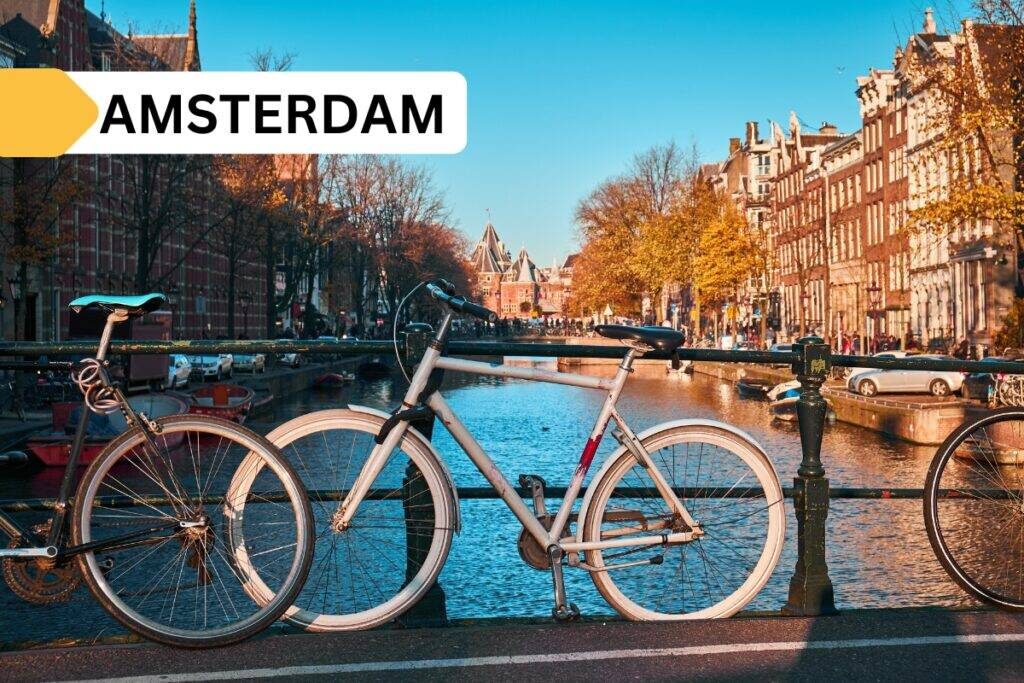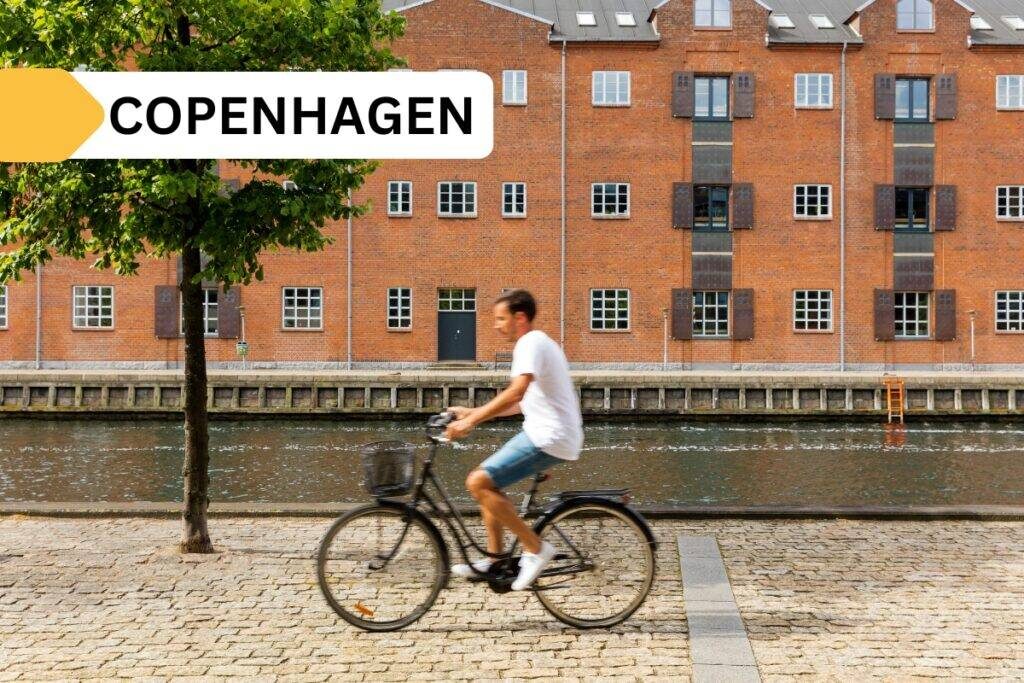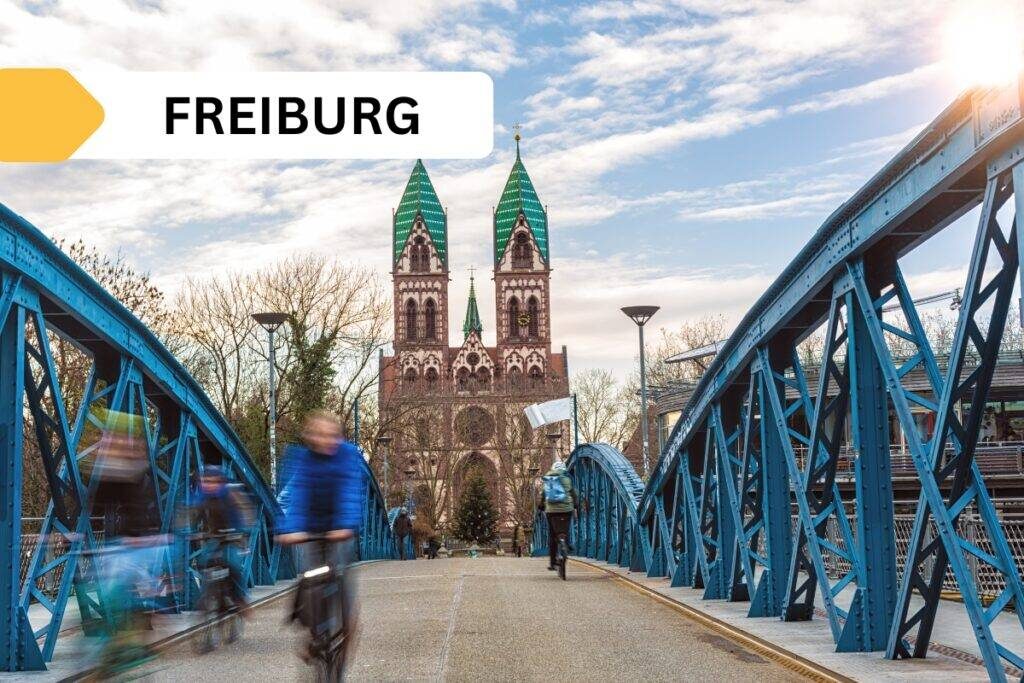Have you ever dreamed of living in a city where cycling is the norm? A city where bikes outnumber cars and cycling feels safe, easy, and enjoyable?
Well, that dream is becoming a reality in many cities around the world. Three European cities have shown that with the right policies, infrastructure, and attitude, biking can be a viable, convenient, and desirable option for urban transportation.
These Cities Have More Bikes Than Cars
Cities with more bikes than cars – it seems like a long-forgotten concept. But at the start of the 20th century, it was completely normal. In fact, bicycles were the main form of transport in most cities.
Not too long ago, the streets echoed with the whir of bicycle wheels rather than the growl of engines. But then, something changed. Let’s rewind the clock and discover how cars took center stage in urban landscapes.
Towards the end of the 20th century, cars became more affordable and convenient to own. They were seen as a symbol of modernity and progress, and with the rise of car ownership, cities worldwide began to surrender more space to accommodate them. Roads were widened, huge parking lots were built, and other forms of transport, such as the humble bicycle, were neglected.
But this shift came at a cost. The dominance of cars has had negative impacts on our health, environment, and society. Pollution, traffic congestion, and road accidents are just some consequences of our car-centric cities.
But, there’s hope on the horizon. Thanks to thoughtful urban planning, as well as a growing movement of passionate cyclists, we’re seeing a reversal of the car-city model, and the humble bicycle is returning to its rightful place at the top.

1. Amsterdam, The Netherlands
Often referred to as the cycling capital of the world, Amsterdam has a long history of prioritising bikes over cars. The city’s cycling history begins further back than you might expect.
In the 1960s, Amsterdam had an enormous car problem. Traffic was reaching an all-time high and was putting pressure on the safety of not just cyclists, but all residents of the city.
In 1971, 400 children were killed in road traffic accidents in the city in just one year. One group, Stop de Kindermoord (or, ‘stop the child murder’ in English), had had enough. After significant, consistent protesting, they gained the government’s attention.
With the aims of reducing the speed of cars and reimagining the space to be more bike and pedestrian-friendly, they soon went on to contribute to urban planning models that were inclusive, safer, and, ultimately, more liveable.
In the mid-70s, however, came probably the most important change. Since its foundation in 1975, the Dutch Cyclists’ Union, or Fietserbond as it’s known in the Netherlands, has continually demanded improved conditions for cyclists. From pushing for more space for bikes in public places to organizing group rides, they have continually advocated for cycling as a fun, convenient and safe means of transport.
The infrastructure for cycling in the Netherlands is legendary, and anyone who’s been to Amsterdam knows the importance of the bike in the city. In Amsterdam now, there aren’t just more bikes than cars; there are more bikes than people!
With almost 1.4 bikes for every person, it’s truly a cyclist’s haven. Today, Amsterdam boasts more than 500 km of dedicated bike lanes. With this in mind, it probably comes as no surprise to find out that nearly 40% of trips in the city are made by bicycle.

2. Copenhagen, Denmark
Copenhagen, the capital of Denmark, is another shining example of how a city can transform itself into a bike haven.
The city’s transformation into a bike-friendly one can be traced back to 1973. With the infamous oil crisis, fuel prices soared, highlighting the country’s dependence on imported oil.
As a result, the Danish government began investing in alternative modes of transportation. Enter the humble bicycle! With a newfound emphasis on the power of the bike, increased funding was allocated for bike infrastructure.
In the late 70s, Copenhagen began developing its now extensive bike network. The city government installed bike racks, dedicated bike paths, and cyclist-friendly traffic lights, all to encourage cycling and discourage driving.
Jump to the present, and the cycling culture in the capital is as strong as ever. The city has many bike-to-work schemes and subsidies for electric bikes. But it’s done one thing better than almost any other city, and that’s invest in infrastructure.
They say that if you build it, they will come, and if that’s true for anywhere, it’s Copenhagen. With more than 540 km of cycle paths and cycle superhighways, there’s plenty of safe space for cyclists. It’s ranked several times as the top cycling city in the world, and in 2016 the city reached the momentous milestone of having more bikes than cars on its streets. Cycling is as commonplace here as it is anywhere else in the world.
ALSO READ: Milan Car Ban: Car-Free City Center By 2024?

3. Freiburg, Germany
Freiburg, a small but mighty city in Germany, is yet another showcase of what’s possible when cities prioritise other forms of transport over cars.
During World War Two, the historical centre of Freiburg was largely destroyed. But instead of rebuilding a city for the more modern era, it was designed in a similar vein to how it was before the war. In other words, it wasn’t rebuilt for cars like other European cities.
In 1972, Freiburg voted to maintain its existing tram network, later expanding upon it in the 80s and 90s. This has helped in prioritising public transport over the use of cars in the centre.
The 70s in Freiburg also saw the introduction of the first entirely pedestrianised area in the city centre, and whilst the area continues to be a popular market to this day, its legacy might be even greater.
Imagine a large neighbourhood with sustainable, urban living at its core, and you’ve got Vauban. Originally developed as a military base in the 30s, Vauban was transformed into a neighbourhood where cars are limited, renewable energy infrastructure was put in place, and pedestrian-friendly design is apparent throughout.
Cars are largely restricted to the outside of the district, meaning little through traffic, and they must obey speed limits of as low as 5 miles per hour when they’re passing through! That’s slightly faster than a pedestrian. But their main secret to keeping cars out? – don’t build parking spaces!
Now, in Freiburg, there are more than twice as many bikes as there are cars, and it’s considerably more common to cycle than it is to drive.

A Car-Free Future?
What all three of these cities have in common is a vision of creating streets that are safe, accessible, and enjoyable for all. They recognize that cycling is not just a mode of transportation but a way of life that promotes health, happiness, and community spirit. As a result of their investments, cycling has become an integral part of city life, attracting people of all ages and backgrounds to take to their bikes.
From the extensive bike network in Seville to the car-free ‘Sunday Parkways’ in Portland, people worldwide are embracing their vision of a future without cars. There’s no blueprint for a perfect city, but if there’s one thing we’ve learned from our list, it’s that if cities put in the effort to reduce the number of cars and increase the number of cyclists, everyone will notice the benefits.
ALSO READ: Car-Free Cities Around the World: 12 Great Urban Examples
The post Car-Free Future: 3 Cities With More Bikes Than Cars appeared first on Discerning Cyclist.
